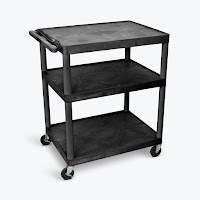ML Kishigo Traffic Signs
Safety is one of the primary factors in consideration of traffic sign placement. One of the most common types of traffic signs? The Stop sign, of course.
Usually, stop signs are used to prevent mishaps on the road where there might be questions about who gets the right of way.
Stop signs are a universal symbol, wherever you are in the world there’s some form of a stop sign—a big, red octagon with the word STOP painted across it.
Typically, stop signs are situated in dangerous places such as intersections or school zones as these are where most of the casualties happen. If you want to keep your district's road safe at all times, install a stop sign to make drivers more aware of what they’re doing.
Sleep soundly at night knowing that your zone minimized the risk of accidents. Road signs are there for a reason, they remind drivers to slow down and stop driving to give way to people crossing or other cars.
Reflective stop signs are similar to high visibility clothing. They function as a beacon in the night to catch light from oncoming traffic and alert the public of their presence.
ML Kishigo, a brand known for creating different kinds of personal protective equipment offers both reflective and non-reflective signs. Visit Engineer Warehouse to view its ML Kishigo collection.
Usually, stop signs are used to prevent mishaps on the road where there might be questions about who gets the right of way.
Stop signs are a universal symbol, wherever you are in the world there’s some form of a stop sign—a big, red octagon with the word STOP painted across it.
Lower The Risk Of Accidents
Road fatalities are one of the leading causes of death around the globe. One slip up on the road can take away someone's life and change yours forever. When there are stop signs present, it signals drivers to slow down and be more cautious of their surroundings.Typically, stop signs are situated in dangerous places such as intersections or school zones as these are where most of the casualties happen. If you want to keep your district's road safe at all times, install a stop sign to make drivers more aware of what they’re doing.
Pedestrian Lanes
Two places that should always have a stop sign are schools and hospitals. Some of the most vulnerable people are in these zones, and it’s common sense that they must be protected. Where there’s a pedestrian lane, there should also be a stop sign. Even if you don’t see anyone crossing the street, you need to stop. You never know who or what is going to pop out of the sidewalk.Sleep soundly at night knowing that your zone minimized the risk of accidents. Road signs are there for a reason, they remind drivers to slow down and stop driving to give way to people crossing or other cars.
Reflective Stop Signs
Stop signs need to be visible day and night. Pedestrian traffic and accidents don’t stop just because the sun has set. Opt for a sign with a reflective finish as opposed to a matte one to ensure your stop sign can be seen no matter what the lighting situation is.Reflective stop signs are similar to high visibility clothing. They function as a beacon in the night to catch light from oncoming traffic and alert the public of their presence.
Non-Reflective Stop Signs
In some cases, non-reflective signs suffice. These types of signs are typically handheld and used by traffic patrolmen to alert vehicles in hospitals or school districts to stop while people are crossing the road. The stop signs are held up by a pole and flashed at vehicles when necessary.ML Kishigo, a brand known for creating different kinds of personal protective equipment offers both reflective and non-reflective signs. Visit Engineer Warehouse to view its ML Kishigo collection.

Comments
Post a Comment